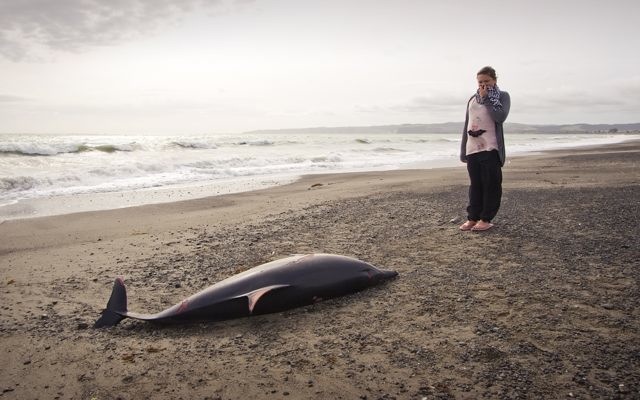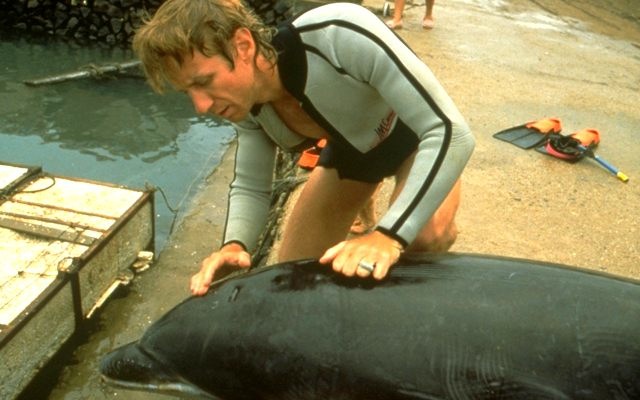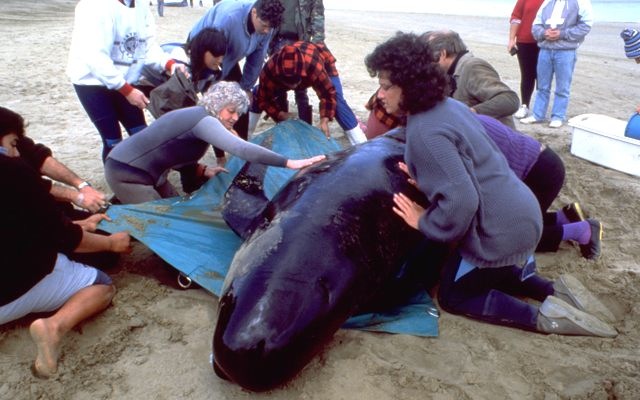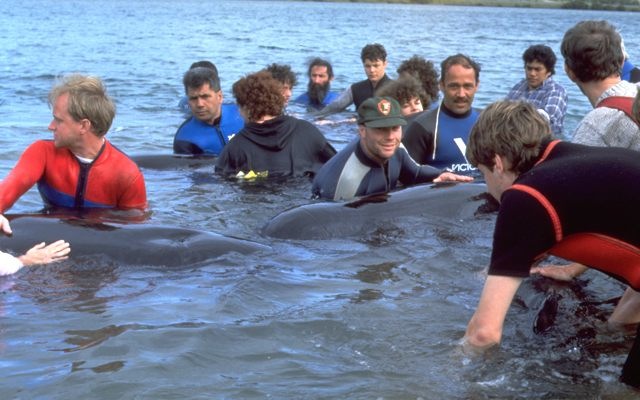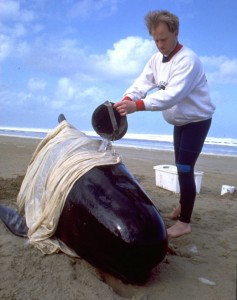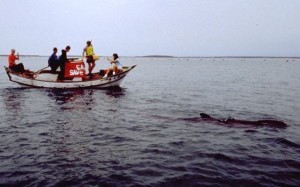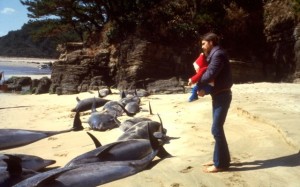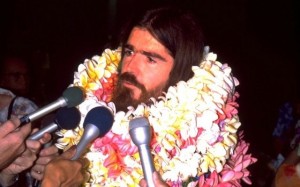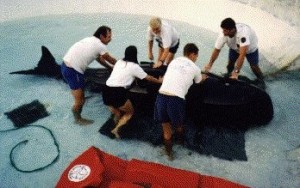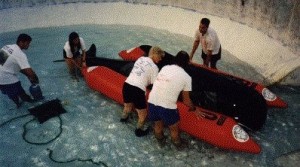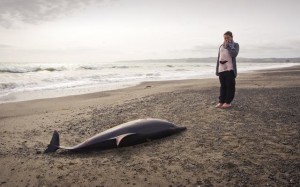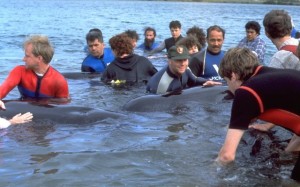Strandings create a situation in which the abstract becomes real, and we have a chance to treat one another as people.
Through its “Save the Whales International” program, EarthTrust has conducted whale and dolphin stranding responses in many parts of the world, from Hawaii to New Zealand and around the pacific.
In Hawaii, ET organized stranding training for a network of veterinarian “first resonders”.
In New Zealand, ET staff in collaboration with Project Jonah have developed re-floatation systems which use compressed air to support whales and successfully get them back out to sea.
ET staff have organized stranding event support and response in North and South America, in Australia, and in several asian nations.
Sometimes whales and dolphins become stranded
on land, where they can’t survive.
Whale and dolphin strandings have historically not been all that significant as a percentage of overall species mortality. Individually stranded animals are generally in such bad shape that they’re not savable.
Above, ET New Zealand director Kerry Plowright helps in the successful saving of stranded pilot whales.
Yet we’ve always thought strandings offer an important opportunity. Because the way we humans think about whales and dolphins is really what will determine whether they survive long into the future. A concept like “a hundred thousand whales” has no real meaning to most human minds. It’s an abstract statistic.
Yet encountering a living, breathing whale in distress is a transforming experience. Entire communities intuitively GET that it must be a priority to save them, and drop what they’re doing to help out. A mobilized community try to help stranded cetaceans is a glimpse of a more hopeful future, in which we allow other beings to live.
It’s a future that’s not looking too likely. Whales and dolphins have always stranded, usually as a last resort when they can no longer swim well enough to breathe at the surface. Due to their intense social bonds and loyalty to one another, an entire pod or herd may follow a single sick individual and strand together; even though this means dying together.
In the earth’s past, this was due to disease or old age. Increasingly, it’s from what we’ve done to the dolphins’ sea habitat and the dolphins themselves. Oil spills give whales and dolphins lipoid aspiration pneumonia since they breath at the water’s surface. Accumulating toxins weaken their immune system so bacteria, viruses, and parasites can attack them. The ingestion of plastics blocks their digestive systems. Their ears and lungs are assaulted with high-power active military sonar that can deafen them and cause brain and lung hemorrhages. Human overfishing starves them of their natural prey. Entanglement with hooks, lines, and net fragments cause ongoing injuries. Acidification and warming of the seas destroy the food webs they depend on. All told, that means there’s a lot more reason to strand than there used to be.
An ET team escorts a freed false killer whale to the open sea after freeing it from a drive kill in Taiwan.
Only a small percentage of whales and dolphins succumbing to these dangers strand where we can see them. Most dying cetaceans just sink, or are scavenged out at sea.
There is a special case of strandings as well: when whales and dolphins are forced to strand by humans we desire to destroy them. These “drive kills” are the sinister version of natural strandings.
Save the Whales Intl. founder Dexter Cate shows his young son an “intentional stranding”, of dolphins and whales driven ashore at Tatsunoshima Island in Japan for destruction. The next day, Dexter had saved some of these animals, and was in prison for having done so.
Dexter speaks to world media upon his return to Hawaii after 80 days in prison at Sasebo in Japan, launching a world campaign to end the drive kills.
In the case of mass strandings, where most of the whales and dolphins are healthy individuals, there is a real chance to save these animals and return them to sea. And we have done that many times – at both “natural” strandings and at drive kill sites.
At EarthTrust, we have long considered stranding events to be important teaching opportunities, with importance far beyond the whales, dolphins, and humans directly affected. These events are often highly visible, and they test our beliefs about what is important and what is expendable.
ETNZ stranding director Sheryl Gibney demonstrates the whale re-flotation system to veterinarians on Oahu.
A community which has mobilized to help save whales and dolphins will continue to feel that connection afterwards, and will not lightly allow them to be harmed in other ways. Moreover, images of communities saving whales and dolphins can be transforming elsewhere. One of the most profound tools we have used in interacting with drive kills is to show the drive-kill participants video of communities elsewhere saving whales and dolphins with the same energy and desperation they would use saving other humans. It’s difficult to see something like that and then resume the stabbing.
So how important are whale strandings to the future of the whales? Despite the fact that only a tiny percentage of whales will die via intentional strandings on land, and be visible to us, this remains the only “real” interaction that many people will ever have with the self-aware beings which evolved in parallel with us in the seas. The only exposure to their lives and deaths, of what we are losing by not paying attention.
And we’ve been personally moved by holding living whales and dolphins up to breathe, to share those very real moments, and to sometimes see them set free to continue free lives at sea. It’s something you don’t forget.
Whales and dolphins are out of sight, and usually out of our minds. They exist as a concept, a narrative, to most of us.
They are not that. They are real races of living, caring, thinking beings, valuable not as a resource but as individuals as we strive to be, raising their families and regarding the universe they find themselves in.
Let’s make a point of saving each individual whale and dolphin we can, and doing it in a sincere way for the best human reasons. Because only once we acknowledge their worth as individuals will their populations have a chance.
Successful ET whale rescue. With any luck, these whales are still out there living their lives. That’s a nice thought.

